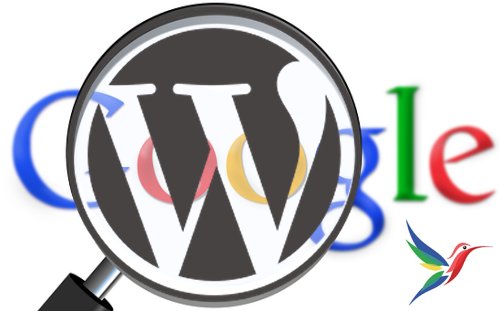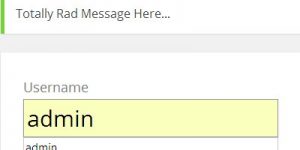Comment on WordPress SEO Tutorial by SEO Dave.

Lets go through the example robots.txt file you found:
User-agent: * Disallow: /cgi-bin Disallow: /wp-admin Disallow: /wp-includes Disallow: /wp-content Disallow: /tag Disallow: /author Disallow: /wget/ Disallow: /httpd/ Disallow: /i/ Disallow: /f/ Disallow: /t/ Disallow: /c/ Disallow: /j/
User-agent: * means all bots should obey this set of rules, doesn’t mean they will (all my robots.txt files include “Crawl-Delay: 20” but Google ignores it).
Anything starting disallow means you don’t want it spidered. Are you having specific problems with some sections of a site being indexed you don’t want indexed (not much point using “Disallow: /cgi-bin” if you don’t even have a cgi-bin directory for example)?
If not there’s no need to have anything here. I will add never use a robots.txt file to hide files you don’t want visitors to see, it’s real easy to load https://stallion-theme.co.uk/robots.txt and if I were dumb enough to add files that I wanted to keep secret, not much of a secret :-)
As a side note most of my robots.txt files are identical to the one for this site, just the crawl delay (supposed to slow down spidering : my sites are constantly hammered by bots) and I only have a robots.txt file to stop a 404 error code when bots look for a robots.txt file.
If you were trying to stop WordPress tags from being indexed adding “Disallow: /tag” would stop them from being spidered, BUT it would waste a lot of link benefit and mean your tags won’t be indexed (is that what you want?). The new WordPress SEO plugin I mentioned above that I was working on has been released at Stallion WordPress SEO Plugin and it can achieve the equivalent of the WordPress relevant disallows above without wasting link benefit.
User-agent: Mediapartners-Google Allow: / User-agent: Adsbot-Google Allow: / User-agent: Googlebot-Image Allow: / User-agent: Googlebot-Mobile Allow: /
Specifying a specific user-agent and allowing it is a complete waste of time. By default they are allowed to spider your site and adding the above won’t increase or decrease the number of visits a user agent will make.
User-agent: ia_archiver-web.archive.org Disallow: /
Specifying a user-agent and disallowing it can be useful. If you are having a problem with a spider you can set this to stop it spidering completely, but be aware if you are having a problem with a bot it probably isn’t a good one one that will follow the rule!
Sitemap: http://www.askapache.com/sitemap_index.xml
Useful if you have a sitemap file.
As you can see the robots.txt file is basically useful for stopping spiders doing things you don’t want them to do, but they don’t all follow the rules and when you do disallow a section of a WordPress site it can come at the cost of link benefit.
BTW some of the information at http://codex.wordpress.org/Search_Engine_Optimization_for_WordPress is wrong.
Search Engine Site Submissions complete BS, total waste of time submitting a site to a search engine like Google, only way to get a site indexed long term and increase rankings is through backlinks that are not rel=”nofollow” or on a noindex page.
Meta Tags have zero ranking value.
Robots.txt Optimization, the example robots.txt file is awful, that could seriously damage a sites SEO, would damage my sites for certain!!!
Talian 3 was never broken, that’s a permissions issue you have. If you want to edit your files online they have to have the correct permissions, depending on your server you’ll want the files set to 666 for full access, but I would strongly advise setting them back to 644 for added security after editing. I find it more secure to edit the files offline and upload using FTP (tendency to forget to change the permissions back).
As a Talian 3 customer you’ll be entitled to both a Talian 5 upgrade and Stallion 6 upgrade. Drop me an email from the email address you used to order and I’ll give you the upgrade details.
David


More Comments by SEO Dave
WordPress SEO Techniques
How to Noindex Paged WordPress Categories and Tags
Before I explain how to noindex paged categories and tags, first going to cover some basic SEO misunderstandings.
If you use a WordPress theme like the Stallion SEO Theme your tags, categories and other WordPress archives will use post excerpts. Have …
Continue Reading WordPress SEO Guide
WordPress SEO Techniques
WhiteHat SEO PR Sculpting : WordPress SEO of Categories Siloing
1,200+ posts in only 8 categories averages at 150 posts per category IF you have them spread evenly (which you won’t).
With the standard 10 posts per category that’s 15 pages deep, unless you have a high PR site (loads of …
Continue Reading WordPress SEO Guide
WordPress SEO Techniques
Whitehat SEO PR Sculpting : Delete WordPress Tags and Categories with NO Search Engine Traffic
If some WordPress tags get search engine traffic keep them and keep the same layout, but delete the tags that get no traffic.
This way your tags with traffic loose no internal backlinks and you waste no link benefit on tags …
Continue Reading WordPress SEO Guide
WordPress SEO Techniques
WordPress SEO Categories and Tags Optimization
I don’t use WordPress Tags because in structure they are the same as Categories.
A lot of webmasters overload their sites with Tags/Categories which means they need more link juice to power their sites SEO. You want most of your SEO …
Continue Reading WordPress SEO Guide
WordPress SEO Techniques
Google Sitelinks and Meta Descriptions Tag
For both questions I’ve not done anything special to achieve this, left it to Google to automatically set the meta description and the Google sitelinks. So what you see is what Google thinks are the best meta descriptions and sitelinks.
Stallion …
Continue Reading WordPress SEO Guide
WordPress SEO Techniques
SEO Impact of Font Sizes
That requires editing CSS files, each colour scheme and layout have their own CSS files, one for the colour scheme and one for the layout, the current two files your site uses are
/wp-content/themes/stallion-seo-theme/colors/layout-310r.css (layout)
/wp-content/themes/stallion-seo-theme/colors/style-brown.css (colour scheme)
So those are the two …
Continue Reading WordPress SEO Guide
WordPress SEO Techniques
WordPress Category Excerpts
The WordPress excerpt replaces the default snippet of text you see, the links to the post remain. So just a way to make your categories unique/SEO’d.
I’m sure there are ways to replace the category with custom content and a link …
Continue Reading WordPress SEO Guide
WordPress SEO Techniques
SEO of WordPress Categories
WordPress categories can gain SERPs in their own right, I link to my categories all the time from relevant pages. What I link to/from is based on what the content I’m linking from, regularly link directly to categories on other …
Continue Reading WordPress SEO Guide
WordPress SEO Techniques
WordPress Static Pages
If you want articles not to show on the home page you have the option of using WordPress Static Pages (“Pages >> Add New” instead of “Posts >> Add New”).
Static Pages (like an About Page) are only added to the …
Continue Reading WordPress SEO Guide
WordPress SEO Techniques
Matt Cutts – Google Over SEO Optimized Ranking Algorithm
Listened to the Podcast, lets see if I can link it direct in a comment for others to listen to:
Information from the PodCast:
All those people doing, for lack of a better word, over optimization or overly SEO – versus those …
Continue Reading WordPress SEO Guide
WordPress SEO Techniques
Social Media Metrics and Over SEO Optimized Sites
Which Matt Cutts talk was you listening to?
I have to admit I don’t like using social media for promotion, to date it’s been severely disappointing, I’ve got thousands of Twitter followers and auto Tweet many sites, have around 2,500 Google+ …
Continue Reading WordPress SEO Guide
WordPress SEO Techniques
WordPress Themes and Search Engine Optimization of Headers, H1, H2, H3, H4
There’s no hard rules on the exact number and ratio of headers to use because the larger an article more scope for header usage, you wouldn’t add 10 different headers (various H*s) to a 250 word post for example, but …
Continue Reading WordPress SEO Guide